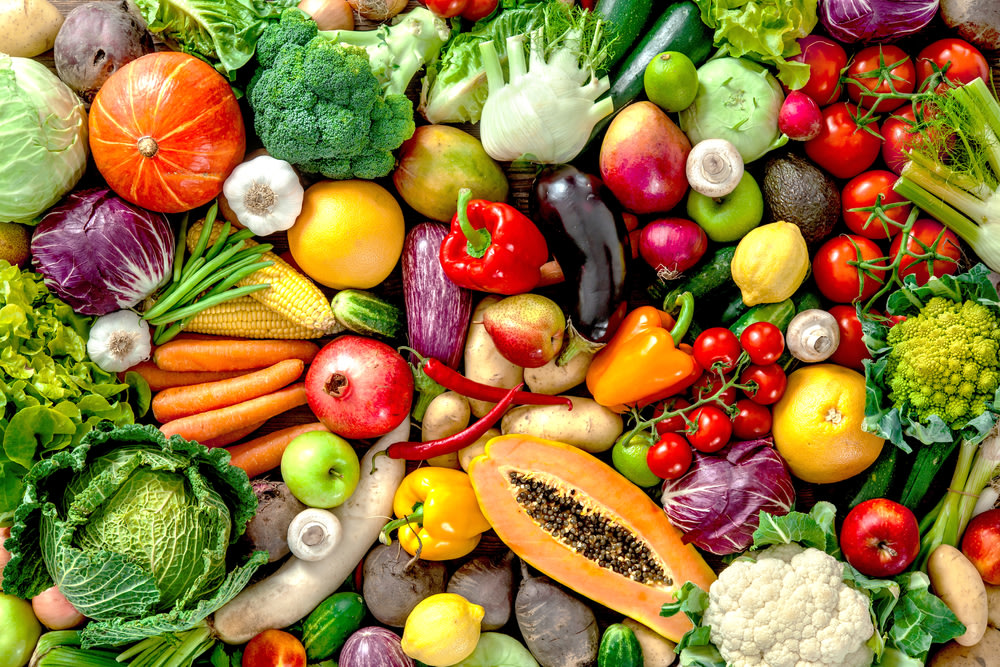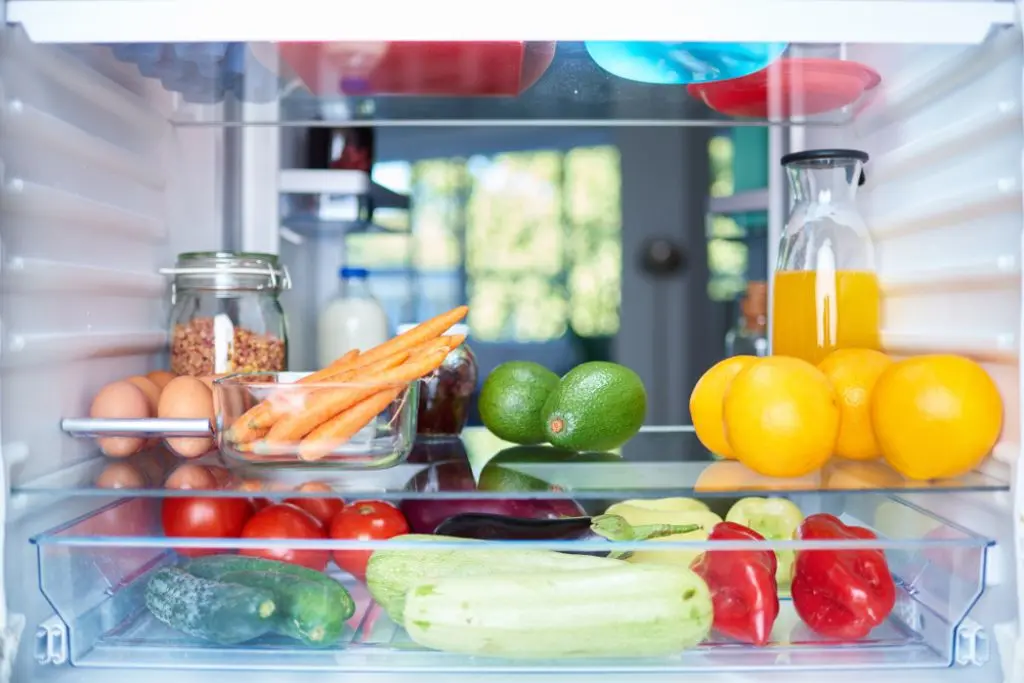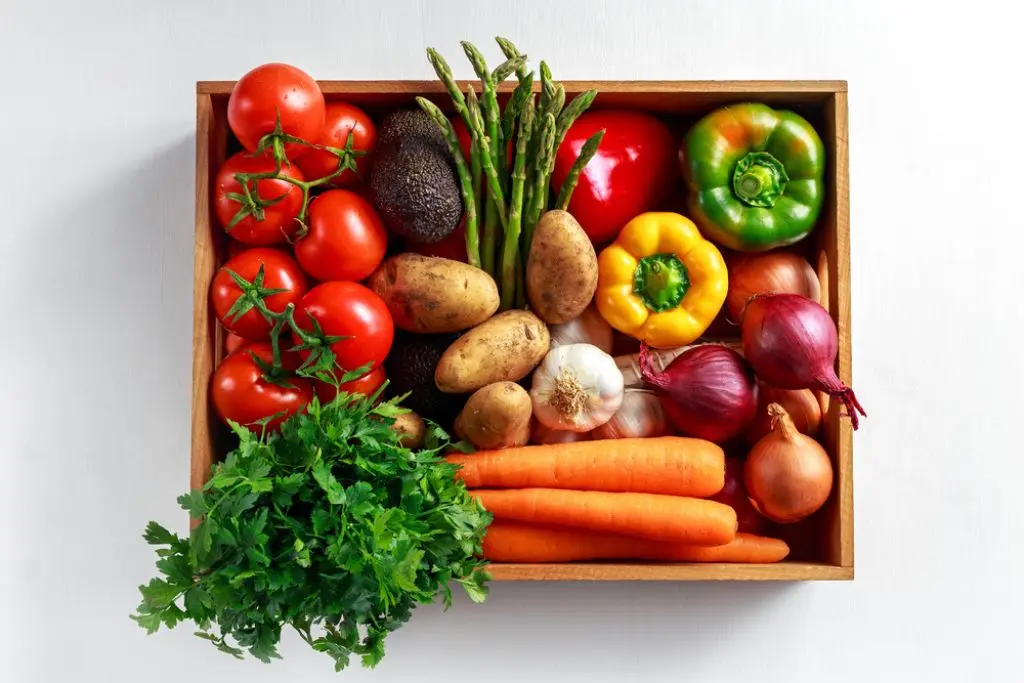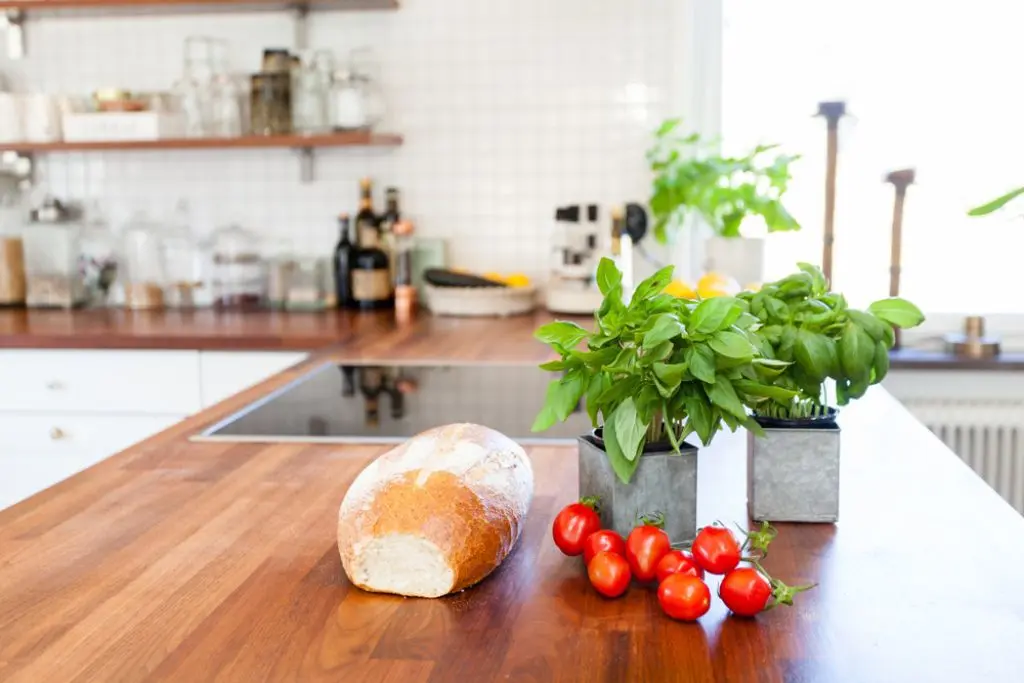Keep It Fresh: How To Store Vegetables Effectively

November 17, 2022 - Updated November 17, 2022

We’ve all been there - that frustrating moment when you begin your dinner prep only to grab your veggies and find they’re inedible. Ugh!
When you’re doing your best to eat well and keep the cost of your weekly food shop down, chucking out spoiled produce is far from ideal. One of the simplest ways to keep your food fresh for longer is knowing the best way to store it, so we’ve put together a list to help you get more out of your groceries, making it easier to eat healthy at home.
Save food, money AND the planet
Storing produce properly isn’t just about saving money and making sure your veggies last until you’re ready to eat them, it’s also about taking care of the planet.
According to the UN Environment Program’s 2021 Food Index Waste Report, an estimated 931 million tonnes of food waste was generated in 2019 and a massive 61% of that came from households, followed by food service at 26% and retail at 13%.
In Australia alone, we waste around 7.6 million tonnes of food which equals about 312kg per person or $2,000 to $2,500 per household per year. Yikes.
Estimates suggest 8-10% of global greenhouse gas emissions are linked to food that goes uneaten. If food waste was a country, it would be the third biggest source of greenhouse gas emissions behind China and the US. Isn’t that crazy?!
The UN report highlights how food waste also burdens waste management systems while contributing to nature and biodiversity loss, pollution and food insecurity.
To help you keep your veggies fresh, check out the lists below (in easy alphabetical order) to figure out if your produce is best kept in the fridge, on the bench, or in your pantry - plus some helpful tricks to keep them fresher for longer. Many of these tips involve airtight bags, so try to reuse any plastic or invest in good quality reusable items.

Best kept refrigerated
Most veggies are best kept in the fridge, with your fridge set at or below 40°F (4°C). If you’re also storing fruit in the fridge, it’s generally best to keep it in a separate drawer (or store things in sealable bags, containers or pouches) to prevent your veg from ripening too fast. Storing produce this way also helps to hold in moisture and prevent dehydration.
Although it’s a good habit to wash your fresh produce to remove any bacteria or residues, it’s best to do this right before you’re planning on eating or cooking it as any leftover moisture can make your fruit and veg rot faster. Here are the veggies best kept in the fridge and some helpful storage tips:
Artichokes: Keep these in a plastic bag or pouch in the crisper drawer.
Asparagus: If you’re not planning on cooking it immediately, keep the stalks fresh by wrapping them in a damp paper towel or trim the tough ends and store your asparagus upright in a jar of water with a plastic bag over the top.
Beets: Store unwashed in the crisper drawer (washing them first will make them rot faster). If your beets have green stalks attached, chop them off before storing as these draw out moisture.
Broccoli: Broccoli needs air circulation and moisture so skip the sealed plastic bag and go for a loose bag, or wrap your broccoli in a damp paper towel. You can also store broccoli in the fridge like a bouquet of flowers with the stalk in a jar of water.
Brussels sprouts: Keep these in a plastic bag or pouch in the crisper drawer.
Cabbage: This is best stored in a plastic bag in the crisper section
Carrots: How to store carrots is a commonly asked question since they can easily shrivel up or become soft and bendy. If your carrots come with green stalks and you won’t be eating them quickly, remove the tops and store them in an airtight container. You can even store carrots in a container of water to keep them crisp and fresh.
Cauliflower: Like broccoli, cauliflower needs air circulation, so it’s best to store it in a loosely closed bag in the crisper drawer.
Celery: This one might surprise you, but the best way to store celery is wrapped tightly in aluminium foil in the crisper drawer.
Corn: Can’t imagine a more beautiful thing? Keep your fresh corn in their husks until you’re ready to eat.
Cucumbers: If you’re not going to eat your cucumbers quickly, plastic wrap acts as a shield to lock in moisture and prevent them from going mushy. You can also place them in an airtight bag or container wrapped in paper towels to make them last longer.
Eggplant: Wrap your eggplant in a paper towel inside a bag, then pop them in the crisper drawer.

Fresh herbs: This depends on whether your herbs are tender or hard! Tender herbs like parsley, coriander, mint and dill should be washed and placed in a jar with an inch of water, covered with a plastic bag or cling wrap and placed in the fridge, while basil should be placed on the benchtop. Harder herbs like rosemary, oregano and thyme should be placed on a slightly damp paper towel in a single layer. Then, loosely roll up the herbs and store them in the fridge!
Ginger: When kept in an airtight bag or container in the crisper section, ginger can last for up to two months!
Green beans: These are best kept in a bag in the crisper drawer
Leafy greens: To prevent your leaves from going slimy, keep them in a plastic bag or container with a paper towel to absorb moisture and remove any brown or slimy leaves before you pop the bag in the fridge. It’s always best to rinse your leafy greens before you eat them, but any leftover water can quickly turn your leaves soggy, so it’s best to wash your leaves as you need them and use a salad spinner to dry them.
Lettuce: Store your lettuce in a plastic bag wrapped in a paper towel in the crisper drawer.
Mushrooms: Store these in a paper bag to let them breathe as a plastic bag can quickly turn your mushrooms slimy.
Parsnips: Remove any green tops straight away if you’re not going to eat them quickly and store them in a bag in the crisper drawer.
Peppers/capsicums: Store these in a loose bag or a mesh produce bag in the crisper drawer to allow air circulation.
Radishes: Wrap your radishes in a damp paper towel, store them in a produce bag and pop them in the crisper drawer.
Spring onions: Keep these in a sealed plastic bag in the crisper drawer.
Sprouts: Drain them well and store your sprouts in a lidded container lined with paper towels to absorb moisture.
Squash: Squash should ONLY be stored in the fridge if it has been cut. Whole squashes (such as pumpkin or butternut) should be stored in the pantry.
Zucchini: Store your zucchini in a loose paper or plastic bag in the crisper drawer.

Best kept on the bench
While avocados and tomatoes are technically fruit, we thought they belonged on this list since they often feature in savoury or vegetable dishes!
Avocado: Having avocados in the same bowl as your bananas will ripen them faster, so be wise about where you decide to store them. If they’re ripe and you’re not ready to eat them, pop them in the fridge. Want to whip up a quick guac? To ripen an avocado as quickly as possible, put it in a paper bag with a banana!
Basil: The best way to keep your basil fresh is to trim the stems, place them in a jar (ensuring no leaves are in the water) and cover them with a plastic bag. Store them on the benchtop at room temperature and replace the water every few days, trimming down the stems where required.
Tomatoes: This all comes down to personal preference, but if you like your tomatoes cold, be aware they can become mushy and grainy in texture if stored in the fridge. We prefer them on the bench!
Best kept in the pantry
Garlic and onions: These can be stored together in the pantry, but keep them separate from your potatoes to prevent sprouting.
Root vegetables such as potatoes and yams: These can be stored together but should be kept separate from onions and bananas.
Squash: Store your squash in the pantry until you’ve cut into it, then refrigerate.
Say goodbye to wasted veggies and wasted dollars by getting savvy with your food storage! If you’re storing your produce correctly and still find it’s going off before you eat it, you might need to buy less at the supermarket or consider doing smaller, more regular trips.

A more empowered you starts with Sweat, and our editorial team is here to bring you the latest fitness tips, trainer recommendations, wellbeing news, nutritional advice, nourishing recipes and free workouts.
* Disclaimer: This blog post is not intended to replace the advice of a medical professional. The above information should not be used to diagnose, treat, or prevent any disease or medical condition. Please consult your doctor before making any changes to your diet, sleep methods, daily activity, or fitness routine. Sweat assumes no responsibility for any personal injury or damage sustained by any recommendations, opinions, or advice given in this article.
Nutrition